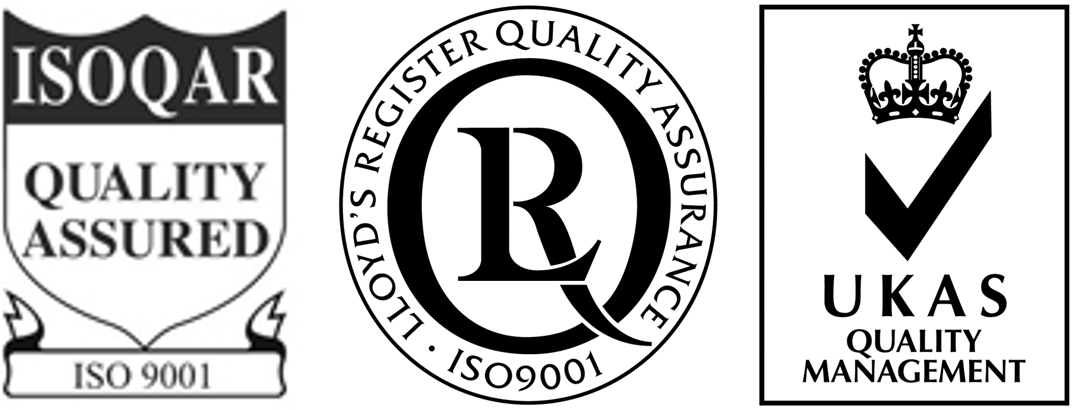- BioVector NTCC典型培养物保藏中心
- 联系人:Dr.Xu, Biovector NTCC Inc.
电话:400-800-2947 工作QQ:1843439339 (微信同号)
邮件:Biovector@163.com
手机:18901268599
地址:北京
- 已注册
HCF cell line细胞株
PROPERTIES
biological source:human heart (normal adult)
Quality Level: 100
Packaging: pkg of 500,000 cells
growth mode:adherent
Karyotype: 2n = 46
Morphology: fibroblast
technique(s): cell culture | mammalian: suitable
relevant disease(s): cardiovascular diseases
Images:
Fig.1 Human Cardiac Fibroblasts, HCF (left). HCF immunolabeled for FSP (right, green). Nuclei are stained with PI.
DESCRIPTION
General description
Cardiac fibroblasts are the most prevalent cell type in the heart, making up 60-70 % of all cells. HCF from NTCC, Inc. provide an excellent model system to study many aspects of human heart function and pathophysiology.
HCF has been utilized in a number of research publications, for example to:
Determine that electrical coupling between cardiomyocytes and fibroblasts is mediated by large-conductance Ca2+-activated K+ channels that can be stimulated by estrogen receptor agonists (Wang, 2006, 2007); and show that antimitogenic effects of estradiol on HCF growth are mediated by cytochromes 1A1/1B1-and catechol-O-methyltransferase-derived metabolites (Dubey, 2005)
Show that in response to mechanical stretch, cardiac fibroblasts release TGF-b which causes trombomodulin downregulation, increasing the risk of thromboembolic events (Kapur, 2007) and also induces cardiac fibroblast differentiation into myofibroblasts via increased Smad2 and ERK1/2 phosphorylation, that could be stimulated by endothelin-1 and inhibited by Ac-SDKP (Peng, 2010)
Demonstrate that activation of G protein-coupled receptor kinase-2 (GRK2) prevents normal regulation of collagen synthesis in cardiac fibroblasts mimicking heart failure phenotype (D′Souza, 2011); identify FGF2 signaling pathway as potential target for modulating apoptosis in cardiac pathology (Ma, 2011) and investigate the roles of scleraxis (Bagchi, 2012) and AMPKa1 (Noppe, 2014) in scar formation following myocardial infarction
Show that the KATP channel opener KMUP-3 preserved cardiac function after myocardial infarction by enhancing the expression of NO synthase and restoring MMP-9/TIMP-1 balance (Liu, 2011)
HCF were also shown to express delayed rectifier IK, Ito, Ca2+-activated K+ current (BKCa), inward-rectifier (Kir-type), and swelling-induced Cl- current (ICl.vol) channels (Yue, 2013).
Cell Line Origin
Heart
Application
human heart function, neointimal formation, vascular remodeling, myocardial repair, extracellular maintenance, signaling, toxicology, gene expression, structural support for cardiomycytes, synthesis of extracellular matrix, growth factors and cytokines
Components
Basal Medium containing 10% FBS & 10% DMSO
Preparation Note
1st passage, >500,000 cells in Basal Medium containing 10% FBS & 10% DMSO
Can be cultured at least 8 doublings
Human Cardiac Fibroblasts (HCF) Culture Protocol
In the normal heart, human cardiac fibroblasts (HCF) play a critical role in extracellular matrix maintenance, growth factor synthesis, and cytokine synthesis. This protocol outlines the recommended procedure for culturing and subculturing human cardiac fibroblasts.
I. STORAGE
Cryopreserved Vials
Store cryovials (306-05f) in a liquid nitrogen storage tank* immediately upon arrival.
*Be sure to wear face protection mask and gloves when retrieving cryovials from the liquid nitrogen storage tank. The dramatic temperature change from the tank to the room could cause any trapped liquid nitrogen in the cryovials to burst and cause injury.
II. CULTURE PREPARATION
1.Ensure the Class II biological safety cabinet, with HEPA filtered laminar airflow, is in proper working condition.
2.Sterilize the biological safety cabinet with 70% alcohol.
3.Turn the biological safety cabinet blower on for 10 minutes before beginning cell culture work.
4.Ensure all serological pipettes, pipette tips and reagent solutions are sterile.
5.Follow the standard sterilization technique and safety rules:
·Do not pipette by mouth.
·Always wear gloves and safety glasses when working with human cells even though all strains have tested negative for HIV, Hepatitis B and Hepatitis C.
·Handle all cell culture work in a sterile hood.
III. CULTURING HCF
A. Prepare Cell Culture Flasks for Culturing HCF
1.Take the Cardiac Fibroblast Growth Medium (316-500) from the refrigerator. Decontaminate the bottle with 70% alcohol in a sterile hood.
2.Pipette 15 mL of Cardiac Fibroblast Growth Medium (316-500)* to a T-75 flask (SIAL0641).
* Keep the medium to surface area ratio at 1 mL per 5 cm2. For example:
·5 mL for a T-25 flask (SIAL0639) or a 60 mm tissue culture dish (SIAL0166).
·15 mL for a T-75 flask (SIAL0641) or a 100 mm tissue culture dish (SIAL0167).
B. Thaw and Plate HCF
1.Remove the cryopreserved vial of HCF from the liquid nitrogen storage tank using proper protection for your eyes and hands.
2.Turn the vial cap a quarter turn to release any liquid nitrogen that may be trapped in the threads, then re-tighten the cap.
3.Thaw the cells quickly by placing the lower half of the vial in a 37 °C water bath and watch the vial closely during the thawing process.
4.Remove the vial from the water bath when only a small amount of ice is left in the vial. Do not let cells thaw completely.
5.Decontaminate the vial exterior with 70% alcohol in a sterile Biological Safety Cabinet.
6.Remove the vial cap carefully. Do not touch the rim of the cap or the vial with your hands to avoid contamination.
7.Resuspend the cells in the vial by gently pipetting the cells 5 times with a 2 mL pipette. Be careful not to pipette too vigorously as to cause foaming.
8.Pipette the cell suspension (1 mL) from the vial into the T-75 flask (SIAL0641) containing 15 mL of Cardiac Fibroblast Growth Medium (316-500).
9.Cap the flask and rock gently to evenly distribute the cells.
10.Place the T-75 flask (SIAL0641) in a 37oC, 5% CO2 humidified incubator. Loosen the cap to allow gas exchange. For best results, do not disturb the culture for 24 hours after inoculation.
11.Change to fresh Cardiac Fibroblast Growth Medium (316-500) after 24 hours or overnight to remove all traces of DMSO.
12.Change Cardiac Fibroblast Growth Medium (316-500) every other day until the cells reach 60% confluency.
13.Double the Cardiac Fibroblast Growth Medium (316-500) volume when the culture is >60% confluent or for weekend feedings.
14.Subculture the cells when the HCF culture reaches 80% confluency.
IV. SUBCULTURING HCF
A. Prepare Subculture Reagents
1.Remove the Trypsin-EDTA solution (T3924) and Trypsin Inhibitor (T6414) from the -20 °C freezer and thaw overnight in a refrigerator.
2.Make sure all the subculture reagents are thawed. Swirl each bottle gently several times to form homogeneous solutions.
3.Store all the subculture reagents at 4 °C for future use.
4.Aliquot Trypsin/EDTA solution (T3924) and store the unused portion at -20 °C if only a portion of the Trypsin/EDTA (T3924) is needed.
B. Preparering Culture Flask
1.Take the Cardiac Fibroblast Growth Medium (316-500) from the refrigerator. Decontaminate the bottle with 70% alcohol in a sterile hood.
2.Pipette 30 mL of Cardiac Fibroblast Growth Medium (316-500) to a T-175 flask (SIAL1080) (to be used in Section IV C Step 15.)
C. Subculturing HCF
Trypsinize Cells at Room Temperature. Do Not Warm Any Reagents to 37 °C.
1.Remove the medium from culture flasks by aspiration.
2.Wash the monolayer of cells with HBSS (H6648) and remove the solution by aspiration.
3.Pipette 6 mL of Trypsin/EDTA Solution (T3924) into the T-75 flask (SIAL0641). Rock the flask gently to ensure the solution covers all the cells.
4.Remove 5 mL of the solution immediately.
5.Re-cap the flask tightly and monitor the trypsinization progress at room temperature under an inverted microscope. It usually takes about 2 to 4 minutes for the cells to become rounded.
6.Release the rounded cells from the culture surface by hitting the side of the flask against your palm until most of the cells are detached.
7.Pipette 5 mL of Trypsin Inhibitor Solution (T6414) to the flask to inhibit further tryptic activity.
8.Transfer the cell suspension from the flask to a 50 mL sterile conical tube.
9.Rinse the flask with an additional 5 mL of Trypsin Inhibitor Solution (T6414) and transfer the solution into the same conical tube.
10.Examine the T-75 flask (SIAL0641) under a microscope. If there are >20% cells left in the flask, repeat Steps 2-9.
11.Centrifuge the conical tube at 220 x g for 5 minutes to pellet the cells.
12.Aspirate the supernatant from the tube without disturbing the cell pellet.
13.Flick the tip of the conical tube with your finger to loosen the cell pellet.
14.Resuspend the cells in 5 mL of Cardiac Fibroblast Growth Medium (316-500) by gently pipetting the cells to break up the clumps.
15.Count the cells with a hemocytometer or cell counter. Inoculate at 10,000 cells per cm2 for rapid growth, or at 7,000 cells per cm2 for regular subculturing.
Supplier来源:BioVector NTCC Inc.
TEL电话:400-800-2947
Website网址: http://www.biovector.net
您正在向 biovector.net 发送关于产品 HCF cell line人心脏成纤维细胞 BioVector NTCC质粒载体菌种细胞基因保藏中心 的询问
- 公告/新闻




